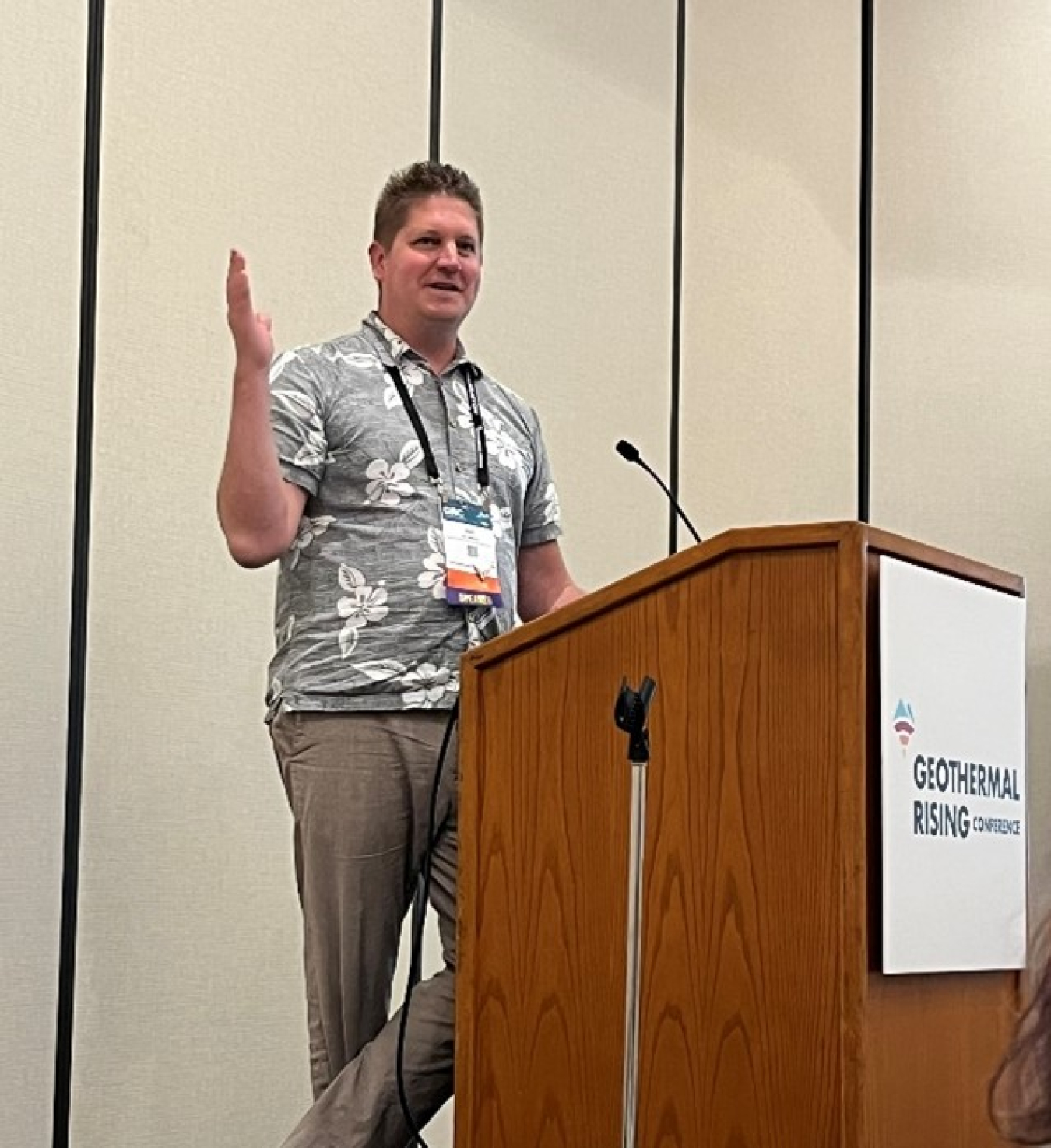The Geothermal Data Repository team keeps up their great work by championing data accessibility, introducing a new virtual assistant feature, and fostering scientific innovation.
Geothermal Technologies Office
November 19, 2024
Credit: Shutterstock
In a school library, a student researches sources for a paper on renewable energy. Hundreds of miles away, a city council member hunts for case studies to support a project proposal for their upcoming townhall meeting. Across the ocean, a scientist looks for images of a seismic reflection survey across a geothermal field. Despite their differences in geography and need, these data seekers all meet in the same place: the Geothermal Data Repository (GDR).
The U.S. Department of Energy (DOE) emphasizes the importance of data reusability in defining project success. To support this principle, in FY13 the Geothermal Technologies Office (GTO) launched the GDR, an online directory of data submitted by researchers. Managed by DOE’s National Renewable Energy Laboratory (NREL), the GDR provides free, universal access to all relevant data generated from GTO-funded projects and supporting partners.
For more than ten years, every GTO-funded project has uploaded its data to the GDR for public use, resulting in 1,268 datasets and 287 terabytes of data, the equivalent of over 3.8 billion books! As more data is uploaded to the site, the GDR team addresses accessibility at multiple levels, and the ability to discover the data is just the first step. Jon Weers, a data scientist and GDR architect at NREL, noted that, “A deeper level of accessibility is being able to use the data in a meaningful way, making sure that all the necessary contextual information is there to use the data effectively.”
This year, to support multi-level accessibility, the GDR team released "AskGDR," a virtual research assistant that allows users to ask questions and be guided to datasets beyond simple keyword searches. The virtual assistant helps direct users to datasets based on data properties, discover information within supporting documents, and explore data from related projects.

Jon Weers presents to geothermal stakeholders about the GDR.
The GDR hosts a variety of data for users to parse through, with some sets being close to a hundred terabytes. However, the GDR ensures those sets are accessible as well: the integration of the GDR with DOE’s Open Energy Data Initiative (OEDI) allows massive datasets to live in the cloud, negating the need for a high-performance computer or a mass data storage array. “By putting these large data sets in the cloud, we've made them truly accessible. Previously when working with big data, you were inadvertently limiting your ability to collaborate to institutions that could handle that, like a large lab or a Fortune 500 company,” noted Weers. “But now because the GDR is integrated with OEDI, it's in the cloud and that opens the door for a wider array of institutions and organizations like smaller universities, high schools, startup companies and other sources of innovation.”
This confirms that the GDR is meeting one of its foundational aspects—ensuring that geothermal data is available to people and communities regardless of location or sector. The repository can be used by a large company while also being downloaded by a remote community to inform discussions on implementing district heating and cooling. By facilitating broad access, the GDR can support communities and others who lack access to larger scientific communities. Efforts like GTO’s Community Geothermal Heating and Cooling initiative help communities explore geothermal options for heating and cooling, including through project data like models and plans. Making this information public and free to download means that the data collected in one community can help another explore sustainable and renewable energy resources.
Through the GDR, GTO is meeting its commitment to data accessibility and continually improving ways to find and use data more quickly, broadly, and efficiently. This directory houses data with far-reaching impact, fueling innovation, promoting scientific discovery, and supporting the global scientific community.
Learn more about GTO’s work to expand geothermal data, modeling, and analysis, along with additional success stories, by visiting the GTO website.

